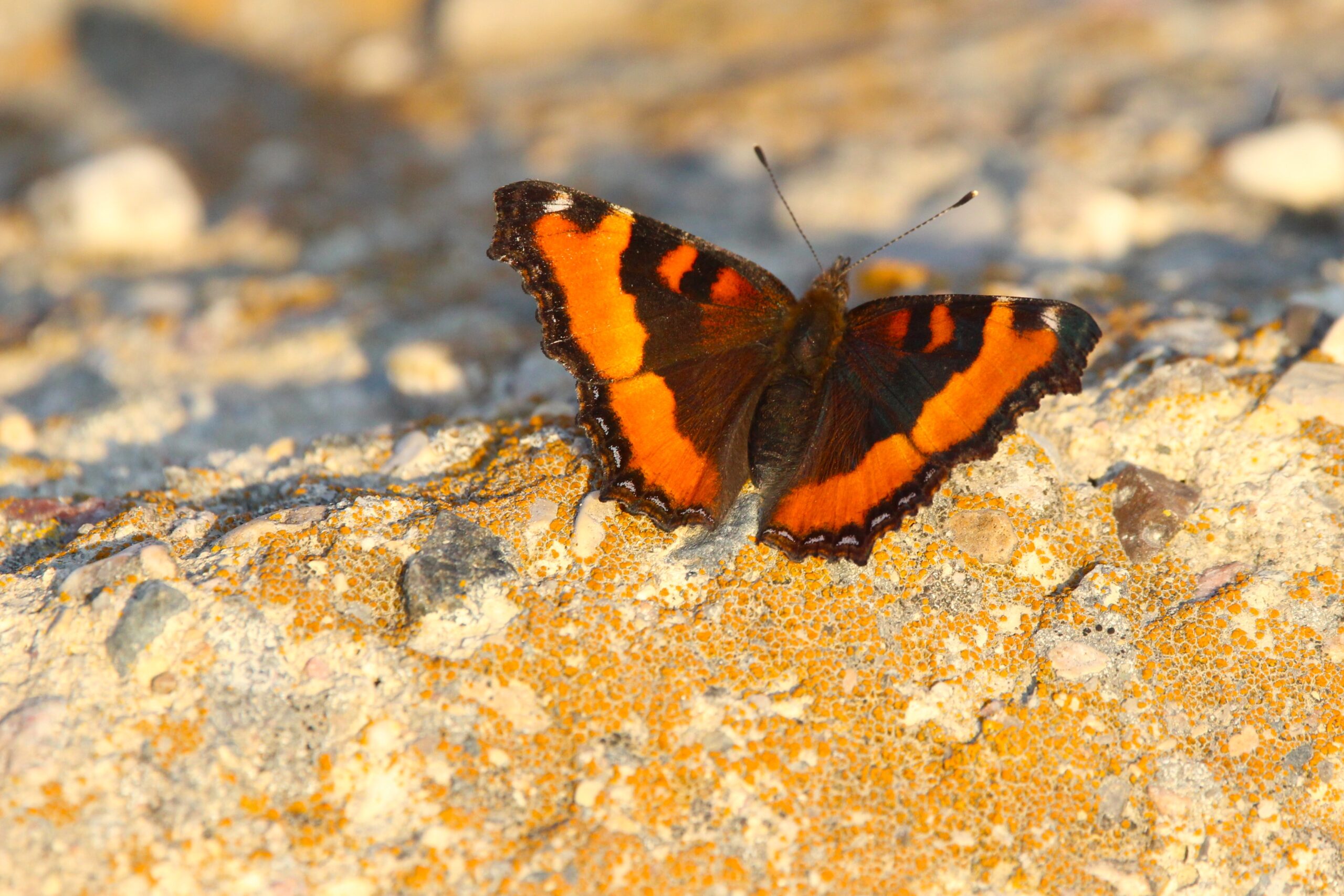As these sunny and warm late summer days shorten, one senses the change of the seasons. Thistle flowers have burst and seedlings wait to be carried by the autumn winds. Unusually tall dandelions display brilliant yellow petals of radiating energy on a background of dried and dying grasses. As one gazes on nature’s pastel painting, dancers move from flower to flower and from clover to thistle. Ones worries of the world seem to float away with the wings of these random wanderers.
Alberta is the cradle of butterfly diversity in Canada, home to 181 species and subspecies. Even more wondrous are the number of moth species in our province. At last count, 2672 moth species live quiet night time lives in Alberta, going about their business often without notice. Butterflies are really a group of colorful daytime moths that spend time eating nectar, tree sap or mud, the choice depending on the species. Alberta is home to five major butterfly families including swallowtails, skippers, gossamer wings, whites or sulphurs and lastly brushfoots. Moths are not only nighttime pollinators. They provide a major source of protein for birds, bats and other mammals. Moths are an essential part of diversity, supporting both plant growth as well as other creatures.
Telling the difference between moths and butterflies is a matter of looking at a few physical features. The antennae of moths are fuzzy and thread-like, while butterflies have smooth antennae sporting “clubs” at the end of those antennae. Butterflies hold their wings vertically when resting. Moths hold their wings flat or tent-like over their body. Although the odd exception does exist, butterflies are active during the daytime while moths are active at night.
Much like the whispers of wind on a summer day, life is fleeting for butterflies. Adult butterflies may live but a few weeks, with some surviving ten months. Moths on average, fare better, living from one to six months, depending on the species. Climatic conditions can affect the life cycle of moths and butterflies as well as the availability of food.
I wonder if butterflies “know” they may have but two weeks to dance from flower to flower, gathering nectar, creating the next generation and risking it all with insect eating birds foraging about. In human terms, a butterfly’s life length is but a flicker of flame in a once bright campfire. How precious each moment, each second would be if we had a much shorter natural life expectancy. It’s the butterfly that reminds us to live in the present moment and to dance during those wonderful days while we can.






